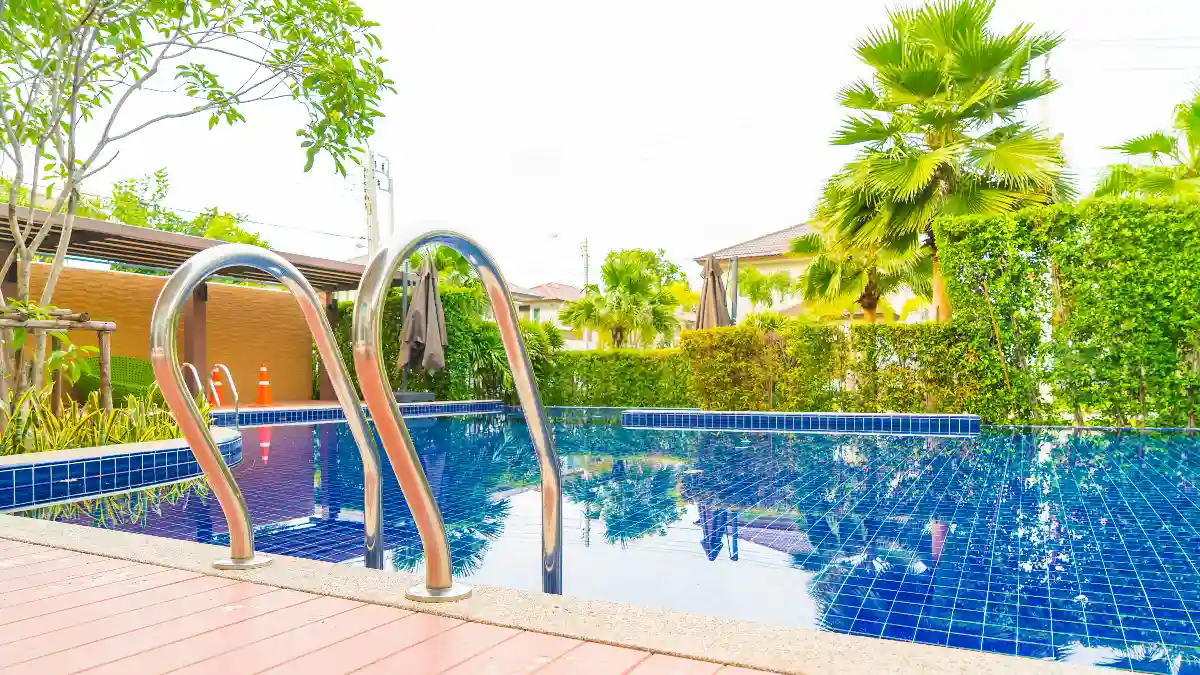From Baja shelves to solar heating, 2025’s best backyard inground pool ideas aren’t just pretty—they cut energy and maintenance costs, too. If you’ve ever fallen for a gorgeous design on social media and then learned the real price tag, permit rules, or upkeep later, you’re not alone. Many homeowners overspend on trendy features, forget code and energy details, and discover hidden maintenance once the concrete sets.
This guide fixes that. You’ll get today’s backyard inground pool ideas that actually work, a reality check on 2025 costs, the inground pool design trends worth copying (and which to skip), the safety/permit basics inspectors look for, and energy-efficient pool upgrades that lower bills from day one.
You’ll also get a fast decision path—what to choose first, what to price next, and how to size your upgrades—so you can brief builders with confidence and avoid change-order creep. By the end, you’ll have the inspiration and the numbers to build a pool you’ll love living with—not just looking at.
Top Backyard Inground Pool Ideas for 2025 (with Costs)
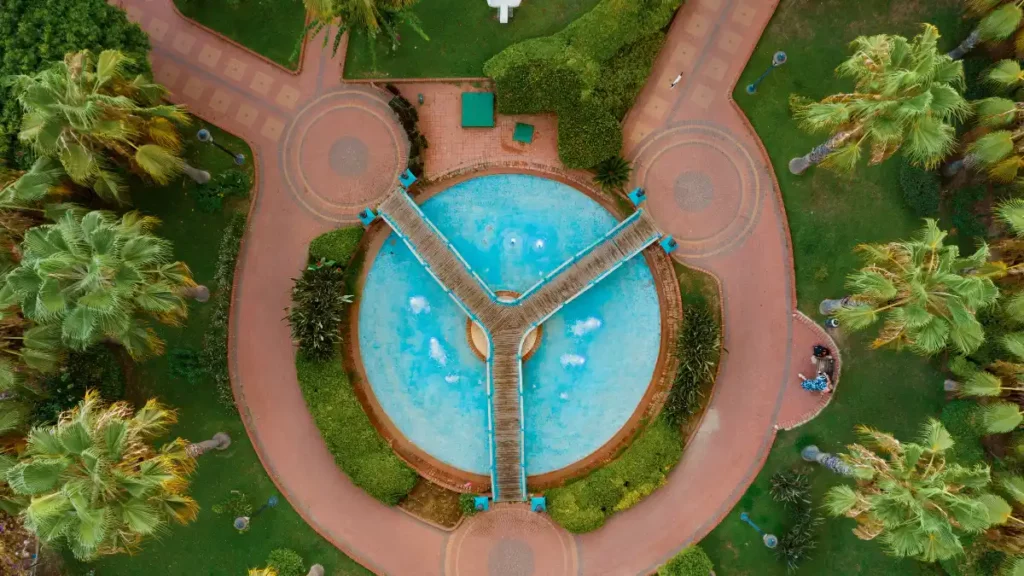
Budget Movers Matrix (Plan for These Early)
Tanning ledges (Baja shelves). Still the most-requested upgrade thanks to lounge-in-place comfort and kid-friendly depth. Builders like Anchor Poolscapes and Matley Swimming Pools & Spas highlight them as signature 2025 features alongside geometric layouts and flush coping. For comfort and furniture stability, spec a water depth of ~9–18 inches on the ledge (match furniture to depth). Add umbrella sleeves and a return jet pointed across the shelf to reduce warm “stagnant” spots.
Integrated spas. Shared equipment reduces footprint and simplifies automation. A spillover lip directed away from the tanning shelf limits heat loss and salt/chlorine splash. Pair with a heat pump for efficient shoulder-season use. (We’ll cover heat choices later.)
Deck jets & sheer descents. They add motion and sound without the energy load of big waterfalls; LED-lit laminars are common in 2025 portfolios. Use adjustable nozzles and wind-aware placement to avoid overspray.
LED lighting zones. Separate circuits for steps/shelf, deep end, and spa let you dim for ambiance while keeping entry points bright for safety.
Clean-lined, geometric shapes. A 2025 staple for contemporary yards; easier to cover and more cover-friendly than complex freeforms. Matley reports growing demand for rectangular pools with integrated ledges and auto-covers.
2025 Cost Anchors (use these as guardrails)
- National install average: about $66,000; typical range $44,499–$87,349; full span $14,000–$135,000 depending on size, material, soil, access, and features (Angi/HomeAdvisor; NerdWallet cites the same dataset). Treat these as starting points before site-specific adjustments.
What really moves your total
- Material & finish: Gunite shotcrete (highest design freedom, often highest cost per sq ft), fiberglass shells (faster installs), vinyl liners (lower upfront, liner replacement later).
- Site & access: Tight yards, rock excavation, spoils hauling, and utility reroutes can swing costs by five figures.
- Add-ons: Spas, ledges, auto-covers, heaters, and water features often stack (equipment upsizing, extra plumbing, electrical subpanel).
Add-on price snapshots (typical)
- Gunite premium: Often $65k–$120k+ for a 14×28–20×40 with features; complex decks drive higher. (Angi 2025 guide.)
- Opening a pool (annual): Around $200–$400 in many regions (chemicals, labor). Useful for first-year budgeting.
Quick idea picks by yard type
- Small/urban: Rectangular shell + 6–8 ft-wide tanning shelf at entry; wall-mounted sheer descent; under-coping auto-cover to save space and heating. (Geometric forms cover best.)
- Sloped lot: Split-level deck with raised beam and sheer descent into main pool—doubles as a retaining element.
- Wind-exposed: Fewer high-arc deck jets; choose sheer descents aimed downward; add wind breaks (hedges, screens) near equipment pad.
- Full sun: Include a cover track from day one; pair with a light-colored interior to limit heat absorption and chlorine demand.
Choose the Right Pool Type: Concrete vs. Fiberglass vs. Vinyl
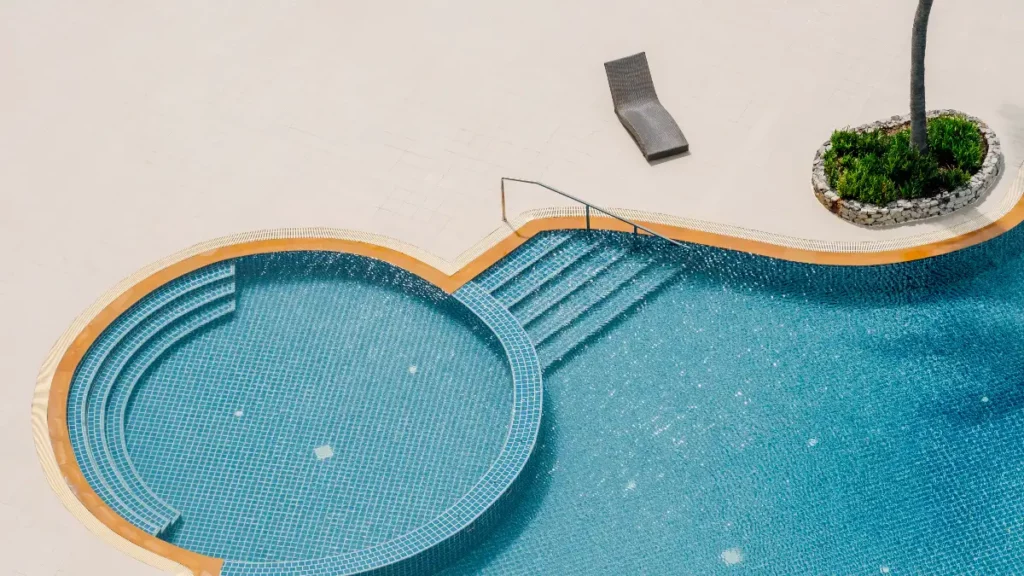
Concrete (gunite/shotcrete).
- Freedom & finish: Any shape, sun shelf anywhere, custom benches/steps; widest tile/plaster choices.
- Durability/feel: Hardest surface; resurfacing typically on a longer cycle but expect periodic plaster/pebble work over the years.
- Timeline: Longest build and cure time; most trades on site.
- Budget guardrail: Frequently the top tier on price among materials in 2025 data.
Fiberglass.
- Speed & simplicity: Factory mold arrives as a shell; fastest install; integrated tanning ledges and benches in many models.
- Limits: Must choose from catalog shapes/sizes; access width for crane/rig matters.
- Surface: Smooth gelcoat (comfortable underfoot).
- Budget: Generally mid-range relative to the national ~$66k average, though shell upgrades and crane time add up.
Vinyl liner.
- Upfront cost: Often lowest entry point to an inground build.
- Trade-offs: Liner replacement in future budgets; careful with sharp dog claws/toys.
- Shape: More freedom than fiberglass, less than custom concrete; steel/polymer walls + vermiculite floor common.
- Budget: Can land near the lower half of the national range before decking/features.
Maintenance implications:
- Concrete’s porous surface may need a bit more brushing; fiberglass gelcoat is algae-resistant; vinyl demands careful chemistry to extend liner life. Regardless of type, the equipment (pump, filtration, sanitizer) drives most ongoing work—spec that thoughtfully.
Bottom line: Use the national Angi/HomeAdvisor 2025 figures as guardrails, then get 3 local bids that include site conditions and identical feature lists to compare apples to apples.
Saltwater vs. Chlorine: What’s Better in 2025?
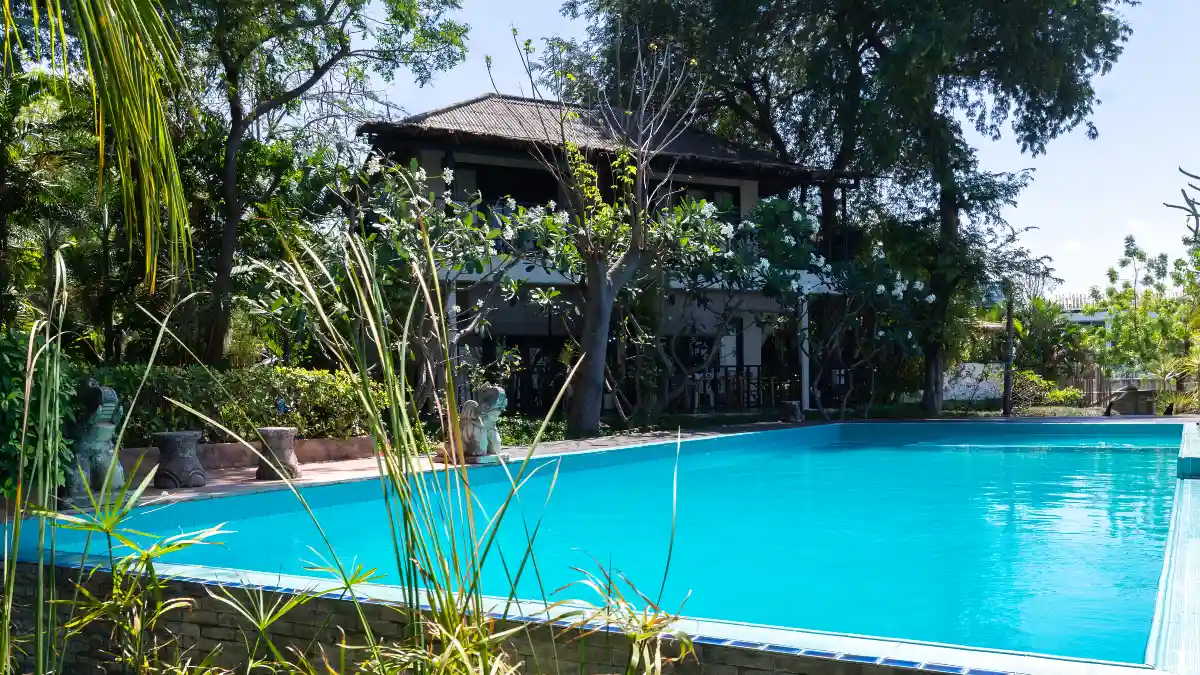
Myth check: A saltwater pool is still a chlorine pool—the salt cell makes chlorine on site. The reason many homeowners switch is comfort and convenience.
Saltwater systems (electrolytic chlorine generators).
- Comfort: Many swimmers report gentler feel on skin/eyes thanks to steadier chlorine production and fewer chloramine spikes (as covered by Bob Vila and Pool Magazine).
- Maintenance: Fewer manual chlorine additions; you’ll still test/adjust pH/alkalinity and clean the salt cell periodically to remove scale. Expect cell replacement every ~3–7 years; common replacement estimates run ~$700–$1,100 for the cell and $500–$900 for a control board when needed (regional).
- Corrosion considerations: Salt can accelerate corrosion on certain metals (handrails, ladder anchors, heater components). Use 316 stainless hardware, sacrificial anodes, and confirm your heater is salt-compatible. Shasta Pools advises routine cell inspection and water balance to prevent scale/corrosion issues.
Traditional chlorine systems.
- Upfront cost: Lower—no generator or cell to buy.
- Maintenance: More hands-on dosing unless you add feeders or automation; easier to winterize in cold climates.
- Comfort: Properly managed chlorine can be very comfortable, but poorly managed chloramines cause the “pool smell” and eye irritation many people blame on chlorine itself.
Which fits 2025 homeowners best?
- Choose saltwater if you value that “soft water” feel and fewer manual additions—and you’re fine budgeting for cell replacements. (Mainstream homeowner sources note the upfront cost but highlight the convenience.)
- Choose chlorine if you want lower initial spend, simple winterization, and don’t mind routine chemical handling.
- Either way, protect metals, maintain balanced water, and automate dosing/schedules where possible—those are energy-efficient pool upgrades that save time and reduce waste.
Energy-Efficient Pool Upgrades That Pay Off
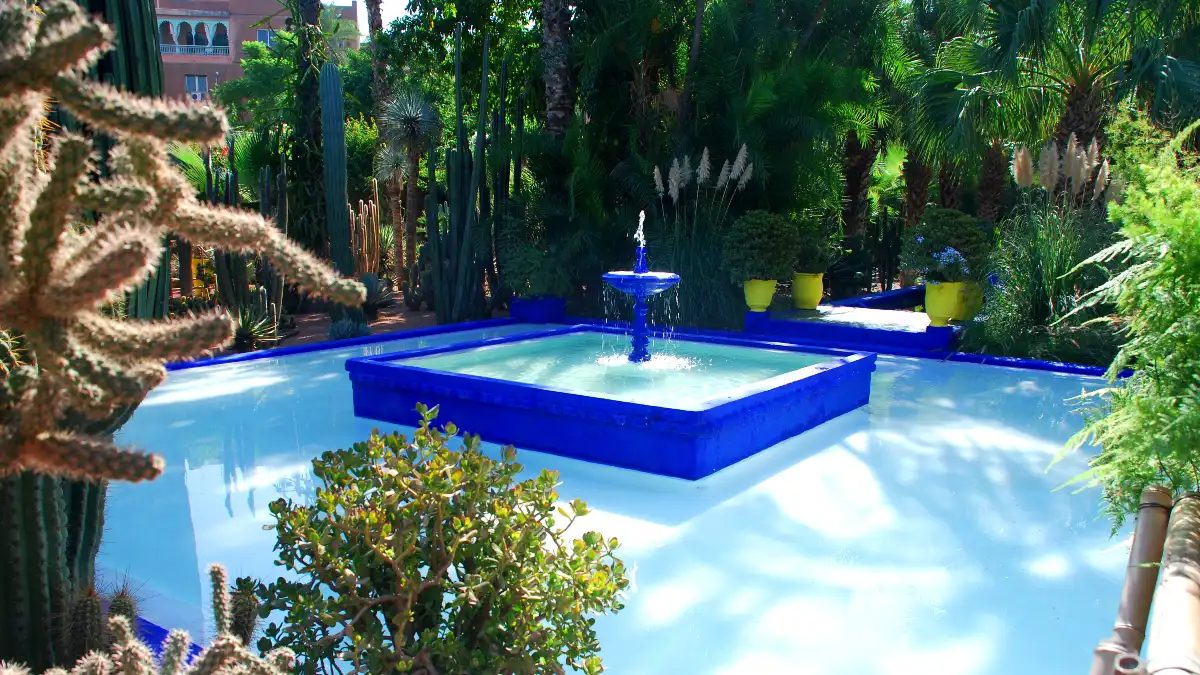
If you want a pool that looks great and is cheap to own, start with the equipment. The biggest wins in 2025 come from the pump, heater, solar, and cover/temperature habits—small choices that stack into four-figure lifetime savings.
Variable-speed (VS) / ENERGY STAR® pumps.
A modern VS pump lets you run long, slow filtration cycles that move the same water with far less electricity. ENERGY STAR notes that certified in-ground pool pumps use ~20% less energy than standard models, with lifetime savings in the hundreds to thousands depending on rates and runtime. Use the official Product Finder to shortlist models and the Pool Pump Savings Calculator to plug in your local kWh price and hours; certified pumps can save up to 65% versus a standard single-speed in certain duty cycles. Practical setup: run low (e.g., 1,200–1,800 RPM) most of the day for filtration, bump to higher RPM briefly for skimming and features, and tie schedules to your cleaner/heater windows.
Pool heat pumps (air-source).
For most temperate climates, a pool heat pump delivers the best efficiency per dollar. The U.S. Department of Energy explains that heat pump pool heaters reach a coefficient of performance (COP) of ~3–7, i.e., 300%–700% efficient under standard test conditions—so every unit of electricity can deliver three to seven units of heat. Translation: steady, relatively low-cost heating for shoulder seasons, especially when paired with a cover. Size to your desired season length and ambient temperatures; in cooler shoulder weeks you’ll still benefit thanks to the high COP.
Solar pool heating (low operating cost, fast payback).
If you get good sun, a solar pool heater is the lowest operating-cost heat you can add. DOE’s Energy Saver guidance and independent buyer resources agree on the core sizing rule: plan collector area equal to ~50%–100% of your pool’s surface (lean high if your site runs cool/cloudy or you want a longer season). Solar raises average water temperature, slashes gas/electric runtime, and has minimal maintenance. Mounting on a south-facing roof/rack with short plumbing runs improves performance; add an automatic diverter valve to route flow only when panels are warm.
Covers, temperature set-points, and “every degree costs.”
Evaporation is the #1 heat loss in outdoor pools. A simple cover is “the single most effective” way to cut heating costs—DOE cites 50%–70% savings potential, even more for covered indoor pools due to reduced ventilation. Pair that with a realistic set-point: DOE estimates each extra °F can raise energy use ~10%–30%, depending on climate. Practical target: 78–82°F for family use, cover nightly, and lower the set-point mid-week when you’re not swimming.
What to do next (5-minute plan):
- Check ENERGY STAR’s Product Finder for VS pumps that match your plumbing size. 2) Run the ENERGY STAR calculator to compare savings at 8 vs. 16 hours/day. 3) Get two quotes: heat pump + bypass, and solar with controller; choose both if budget allows—solar handles baseline warmth, heat pump trims the edges. 4) Add a cover (manual or auto) on day one. 5) Program schedules to run low-RPM filtration most hours and “boost” only for cleaning and heating.
Safety, Codes & Permits: What Homeowners Must Know
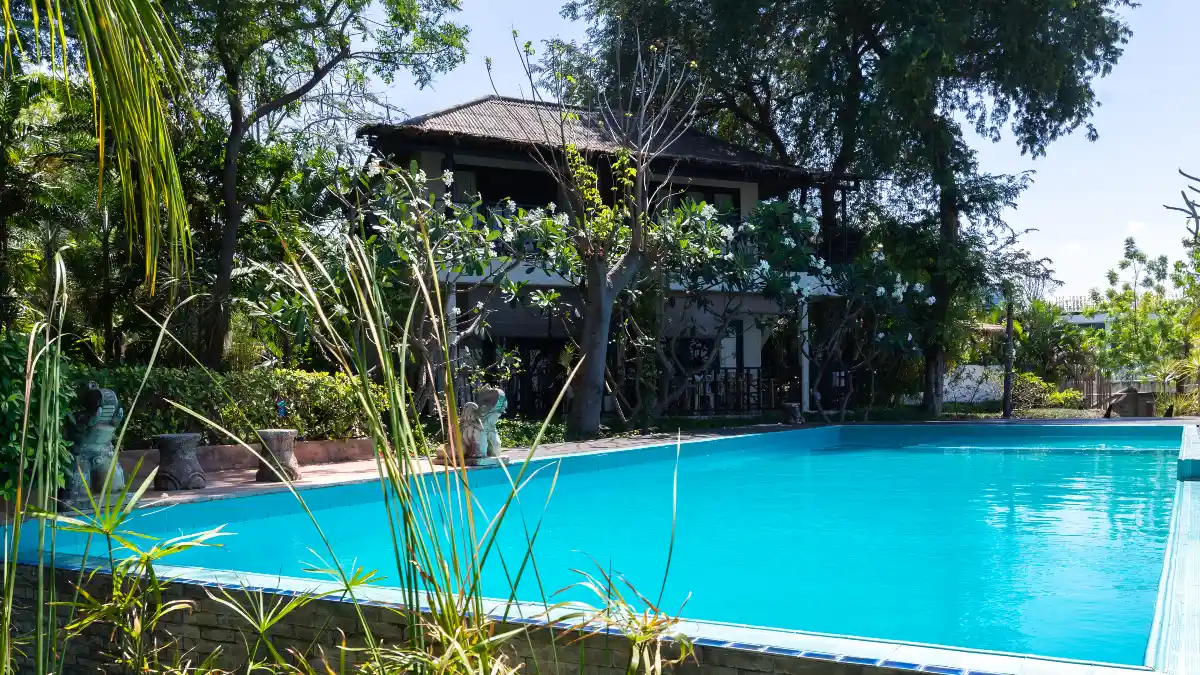
Design to code from day one. You’ll avoid stop-work orders, speed inspections, and—most importantly—keep people safe.
Barriers & gates (your first line of defense).
Most U.S. jurisdictions reference the International Swimming Pool & Spa Code (ISPSC). The common baseline: a barrier at least 48 inches high with self-closing, self-latching gates and hardware set at compliant heights/clearances; site-specific amendments apply, so always check city/county rules. In practice, plan your fence layout and gate swing with the site plan before excavation so you’re not improvising at plaster day.
Electrical & construction fencing.
Expect permits and inspections for bonding/grounding, equipotential grids, and all wiring per NEC Article 680. Many counties also require temporary construction fencing before filling and a permanent compliant barrier before final. Harford County’s homeowner guide is a clear example of what officials look for: permits, temporary barrier, final barrier height (48 in.), and inspection sequencing. Your local checklist will read similarly.
Drain safety (anti-entrapment).
All pools should use VGB-compliant drain covers (Virginia Graeme Baker Pool & Spa Safety Act) and, where needed, secondary anti-entrapment systems. Keep covers in-date and replace per manufacturer intervals; teach kids to stay away from drains. The U.S. Consumer Product Safety Commission provides straightforward guidance used by inspectors and operators alike.
Drowning prevention (layers, not one device).
The CDC’s 2024 Vital Signs report shows ~4,500 drowning deaths per year (2020–2022)—a sobering rise versus 2019. Use layers of protection: compliant barrier, self-closing gates, door/immersion alarms, vigilant supervision, and swim lessons for kids and inexperienced swimmers. Build those layers into the design (power to gate closers/alarms, conduit for sensors) so you’re not retrofitting later.
Where to find the standards (and what’s new).
For technical specs beyond local code, consult PHTA (Pool & Hot Tub Alliance) standards. In 2025, PHTA and ICC updated ANSI/PHTA/ICC-5 for residential inground pools—covering design, equipment, operation, and safety details that builders rely on. Ask your builder which PHTA standards they follow and include them by reference in your contract.
Water Use & Local Rules: Designing for Drought-Resilience
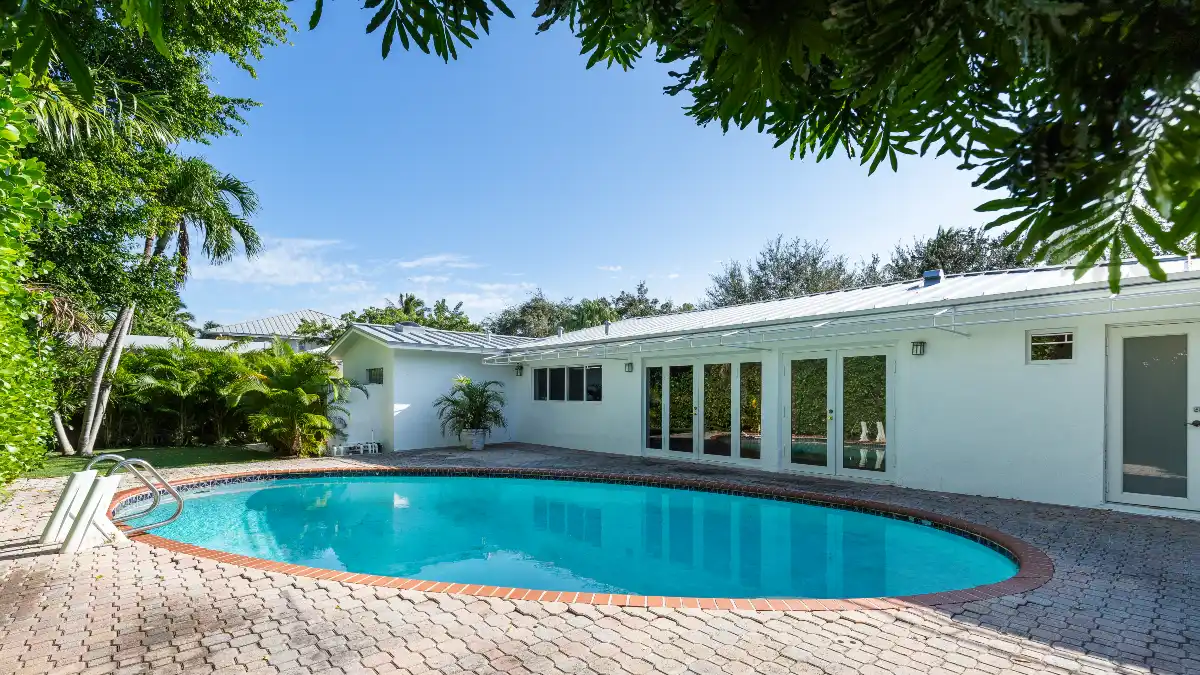
State vs. local: know the difference.
In California, there’s no active statewide emergency conservation rule as of June 5, 2024—but local suppliers can and do impose their own restrictions (e.g., fill limits during drought stages, mandatory covers). Always check your water district’s current stage and pool policies before you sign a build contract.
2025 long-term standards (and what they mean for pools).
California’s “Making Conservation a California Way of Life” regulation took effect Jan 1, 2025. It sets supplier-level efficiency objectives now, with enforcement beginning in 2027—so expect more emphasis on outdoor efficiency, covers, and leak control over time, even if homeowner-level rules aren’t explicit. Net-net: designing for low makeup water (cover + wind screens + efficient backwash) is future-proof.
Build smart for dry years.
Specify a cover in the contract, choose cartridge filtration to minimize backwash (where appropriate), add an auto-fill with leak alarm, and plant climate-ready landscaping around splash zones. If your utility offers rebates for covers or efficient equipment, capture them during permitting.
Must-Have Tech & Low-Maintenance Gear
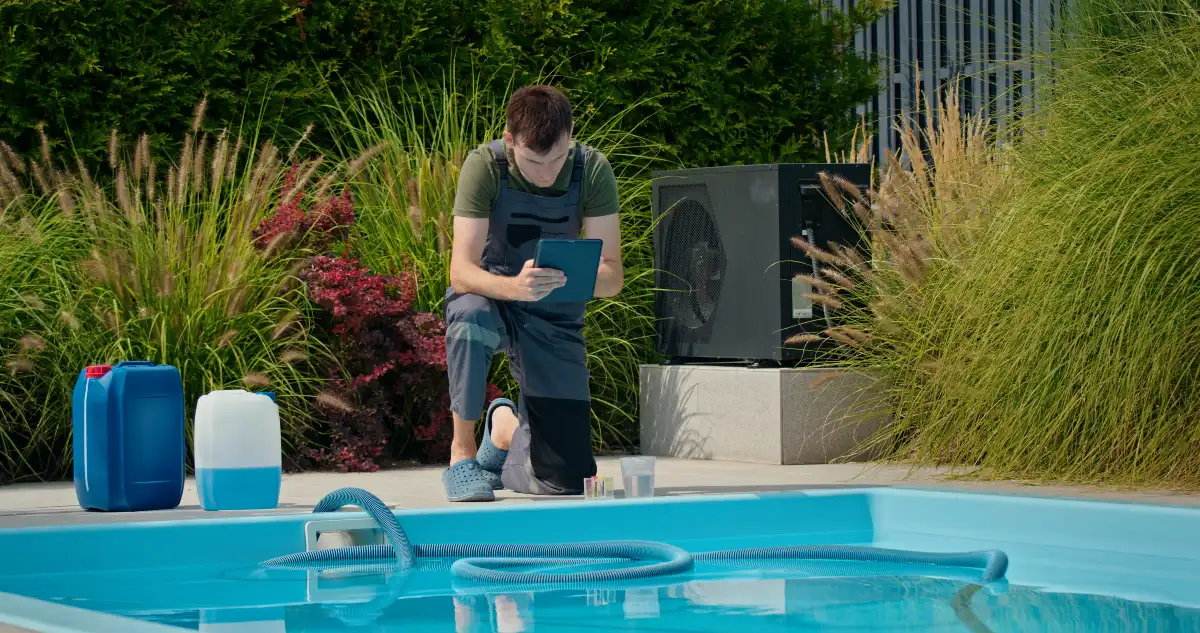
Robotic cleaners (hands-off, energy-smart).
A good robotic pool cleaner reduces manual brushing and lets you run the main pump fewer hours. 2025 hands-on testing from mainstream reviewers highlights models that scrub floor/walls, map efficiently, and capture fine debris—cutting cloudiness and algae risk while saving your time. Look for top-load filters, wall climbing, and programmable cycles.
Smart automation (control from your phone).
Brand ecosystems—Pentair IntelliCenter, Hayward OmniLogic, Jandy AquaLink/iAquaLink—let you schedule pumps, heaters, lights, valves, and features from a single app. Tie pump speed to cleaner cycles, lock in heating windows, and set “vacation” modes to keep chemistry and skimming stable with minimal energy. These systems also integrate with voice assistants and send status alerts so you fix issues before they waste energy.
Smart dosing & monitoring.
If your controller supports it, add ORP/pH monitoring or a salt-cell automation kit to keep sanitizer steady and avoid over-chlorination. Stable chemistry protects finishes and metal components—and lowers the chance you’ll shock the pool (and then waste heat) after an algae bloom.
Will a Pool Add Value? The 2025 Reality
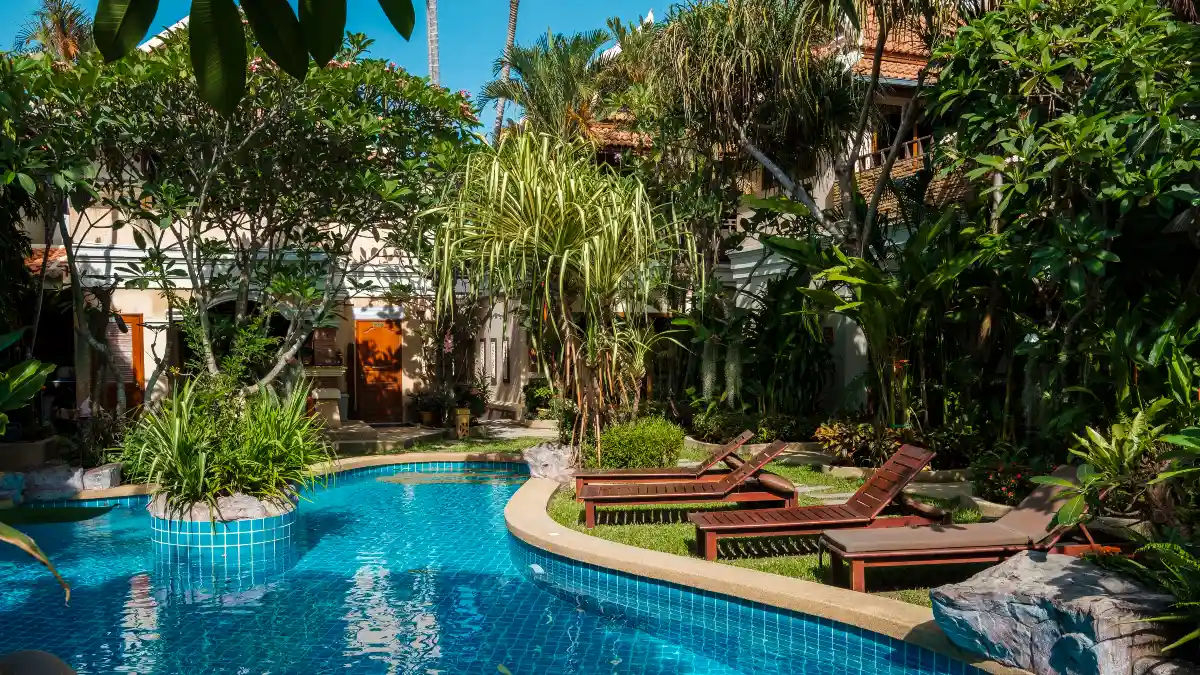
Realtor.com’s 2025 analysis found that, as of April 2025, listings with pools carried a ~54% price premium, and nearly one in four U.S. listings included a pool. Pools remain highly desirable, especially in warm markets, but homes with pools also tend to be larger and in higher-priced neighborhoods—so part of the “premium” reflects the home itself.
Premiums are moderating.
Several metro deep-dives show the “pool premium” drifting back toward pre-pandemic norms—good news for buyers, and a reminder to build for your own use first, not purely for resale ROI. Treat any value boost as a bonus, not the business case.
Conclusion
Shortlist how you’ll use the pool first (e.g., Baja shelf + spa for lounging), then confirm permits, electrical, barriers, and VGB-compliant drains before you dig. Lock in low operating costs on day one: ENERGY STAR variable-speed pump, a cover, and either a pool heat pump or solar pool heater (or both) with smart automation.
That combo protects your budget and extends your season without spiking bills. Next step: pull three local bids using the same spec sheet and ask each builder to itemize equipment models, barrier details, and schedule/programming support. Then run the ENERGY STAR savings calculator with your utility rate to verify the operating math before you sign.
You’ll end up with backyard inground pool ideas that are gorgeous, durable, and genuinely energy-efficient pool upgrades aligned with 2025 inground pool design trends.

